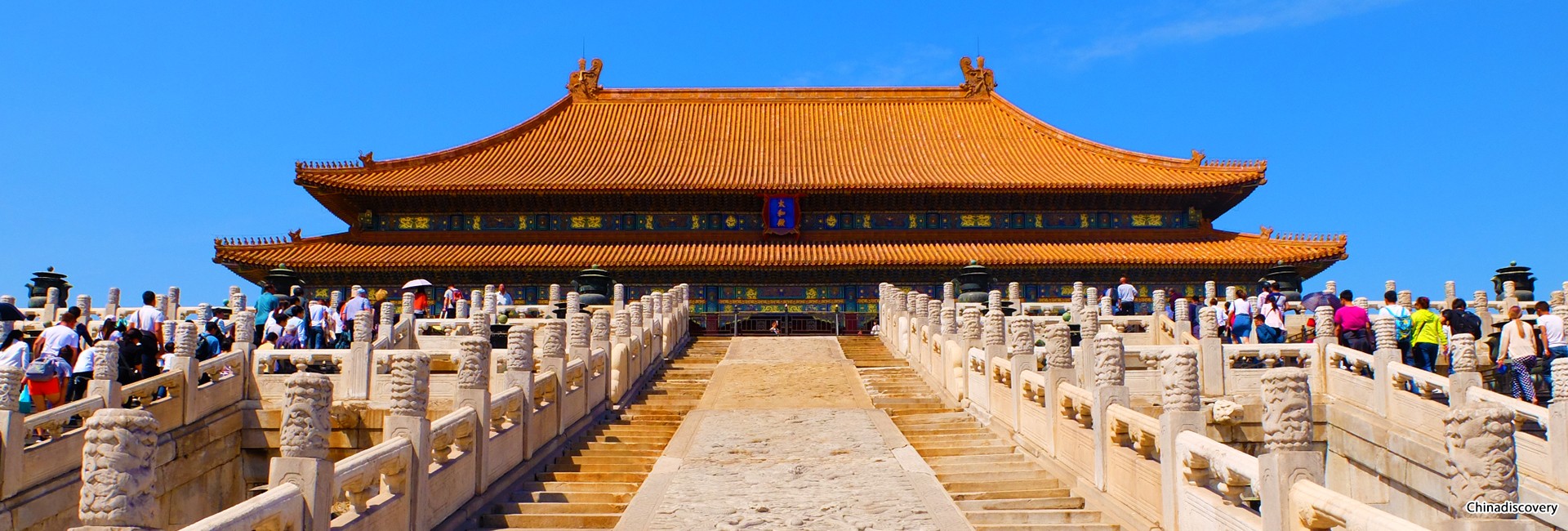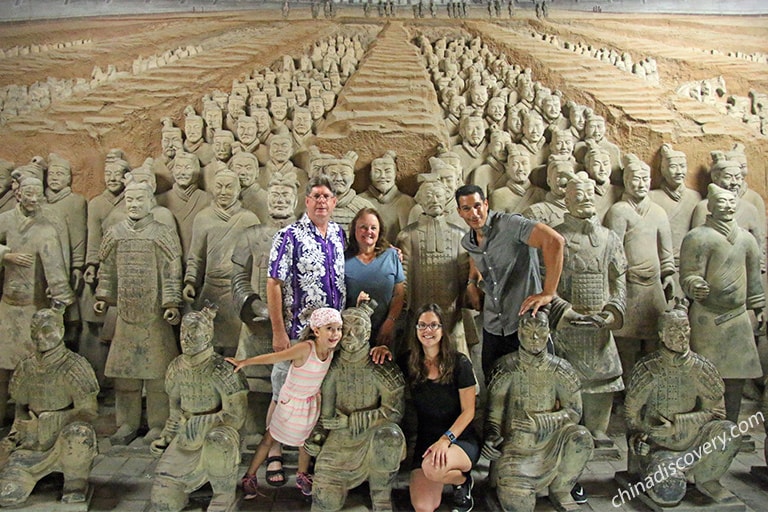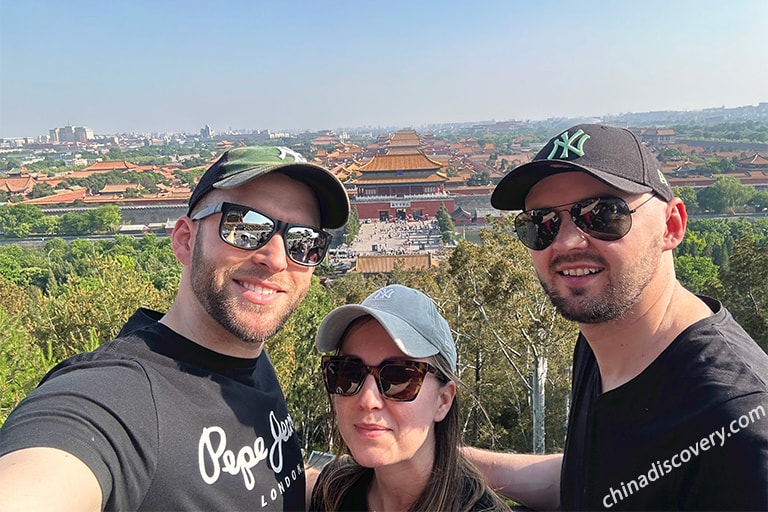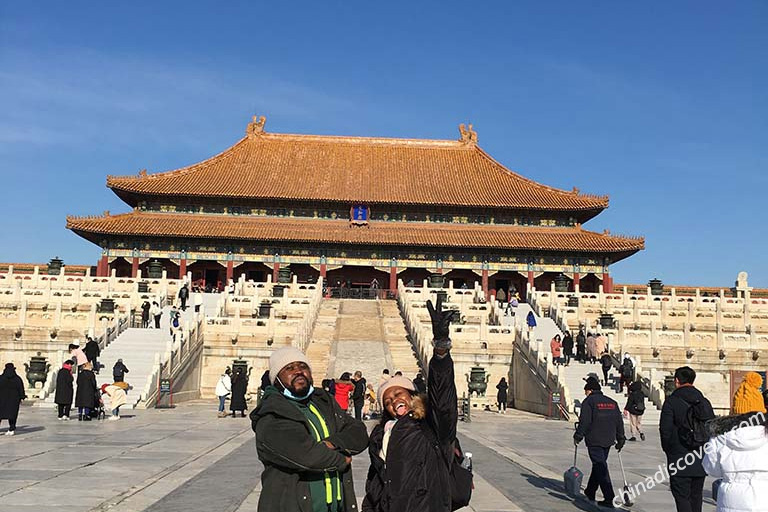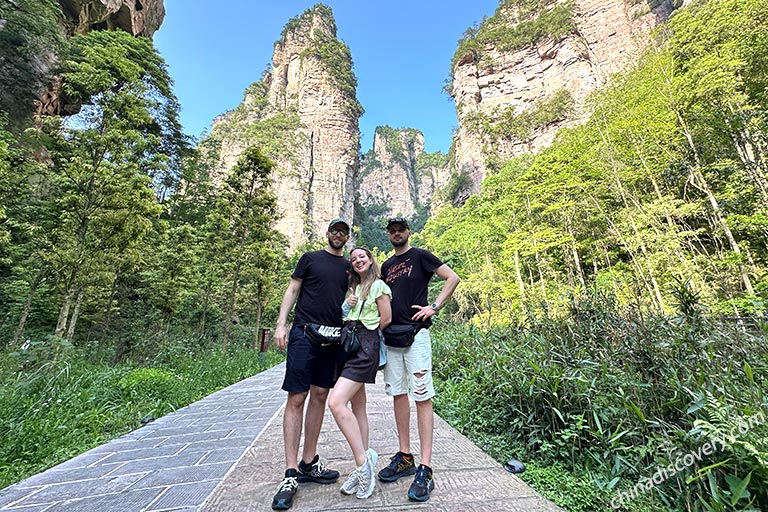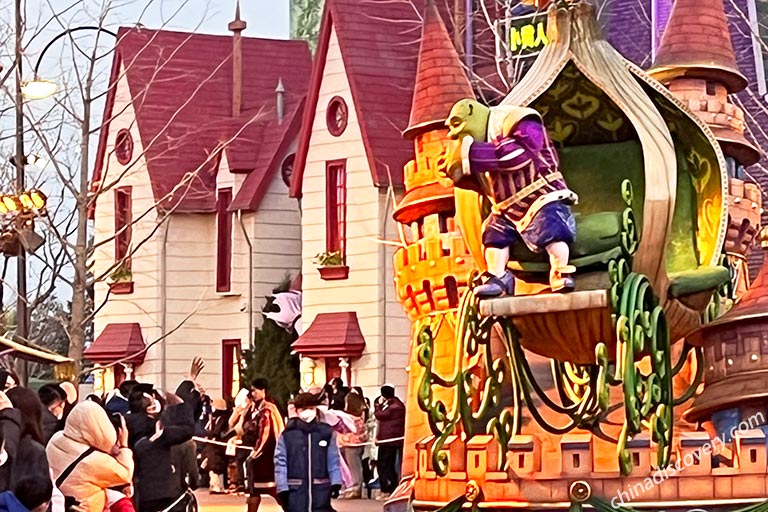Forbidden City Facts - 10 Questions about Palace Museum 2024/2025
Forbidden City, the most complete and largest palace complex in China, is also the largest ancient imperial palace in the world. The Forbidden City in Beijing, together with the Palace of Versailles in France, Buckingham Palace in United Kingdom, the White House in United States and the Kremlin in Russia, is known as the world's five great palaces. There are many folk legends about the Forbidden City, and how much do you know about it? Who, when and why built the Forbidden City? How old, how big and how many emperors had lived in there? Why was it forbidden and still is forbidden now? Here, we have listed the Top 10 most commonly questions about it, and these interesting facts will help you know more about the history and culture of the Forbidden City.
The Forbidden City corresponds to the Chinese name "紫禁城": "紫" represents purple, only emperors and nobles could use in ancient China, which was regarded as a symbol of high status; "禁" means forbidden, and ordinary people cannot enter this place; "城" represents the city and refers to the grand scale of the Forbidden City. Ancient China emphasized the "unity of heaven and man", and the Emperor of Heaven lived in the Ziwei Palace in the heaven, and the emperor who regarded himself as the "son of heaven" lived in the Purple Palace (Forbidden City) on earth. In 1925, the Forbidden City was renamed the Palace Museum and opened to the public. Forbidden City is not forbidden anymore.
Useful Links about Forbidden City:
>>Everything about Forbidden City Tickets: How and When to Book, Price and Tips 2024/2025

Wumen Gate at Forbidden City
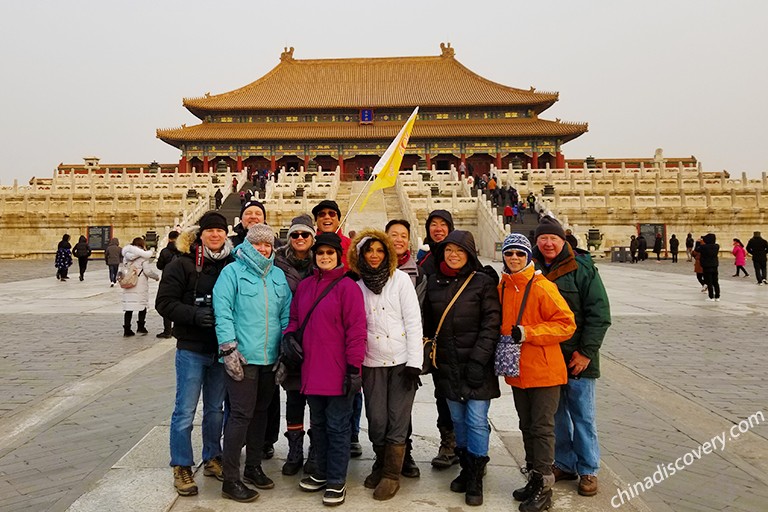
Our Guests visited Forbidden City at winter in 2018
The Forbidden City was first built in 1406, the fourth year of the reign of Ming Emperor Chengzu - Zhu Di, lasted 14 years and was completed in 1420, so far has a history of more than 600 years. After the completion of the Forbidden City, it was destroyed by fire many times in history, and underwent continuous restoration and reconstruction on the way, until after the founding of the People's Republic of China in 1949, the Forbidden City was once again underwent large-scale repairs, and maintain the original appearance of the Forbidden City that we see today.
Recommended Beijing Tour including Forbidden City:
In 1406AD, Ming Emperor Chengzu - Zhu Di, the third emperor of the Ming Dynasty, decided to move the capital from Nanjing to Beijing where was his fief to consolidate his political power and began to build the Forbidden City. Zhu Di employed 100,000 of the best craftsmen and 1 million laborers to build the Forbidden City. As for the chief designer of the Forbidden City, there are different opinions, including Kuai Xiang, Cai Xin, Yang Qing and so on, and the most recognized is Kuai Xiang, who is an outstanding craftsman in the Ming Dynasty, especially good at carpentry, and has a very high attainment in wooden construction, which is highly appreciated by Ming Emperor Chengzu - Zhu Di.
Recommended Beijing Tour including Forbidden City:
☛ 3 Days Beijing Essential Short Stay Tour (Transit Visa Free)
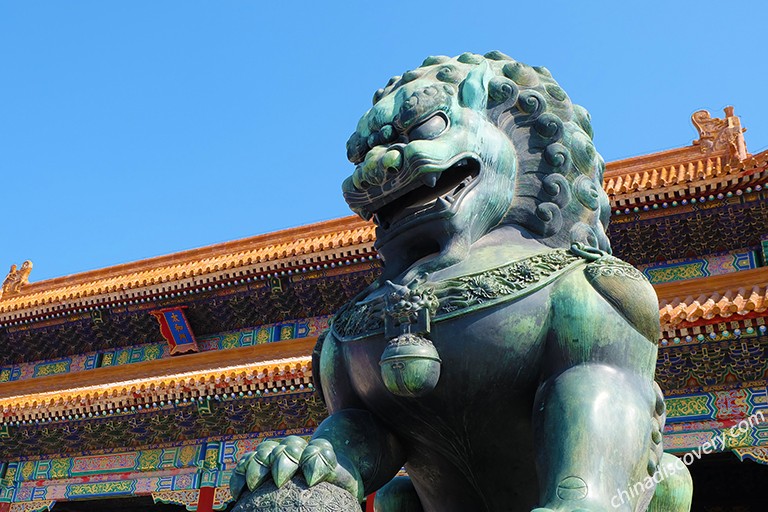
Bronze Lion at Gate of Supreme Harmony
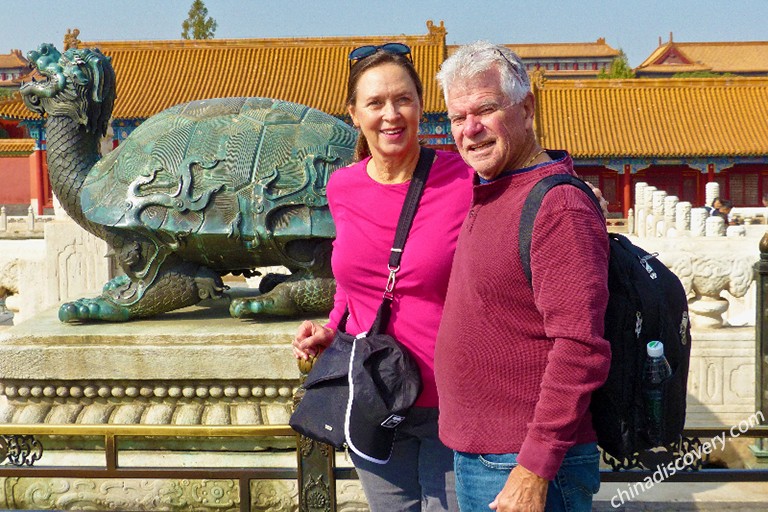
Our Guests Take Photo at Hall of Supreme Harmony
From the completion of the Forbidden City in 1420 from Ming Dynasty to the end of Qing Dynasty in 1911, a total of 24 emperors lived in the Forbidden City in 491 years (1420 - 1911 AD), including 14 in the Ming Dynasty (1368 - 1644 AD) and 10 in the Qing Dynasty (1644 - 1911 AD). The first emperor who lived in the Forbidden City was Ming Emperor Chengzu - Zhu Di (1360 - 1424 AD), and the last emperor was Puyi (1906 - 1967 AD), the last emperor of the Qing Dynasty. Not only the emperor lived here, but also members of the royal family and many concubines, servants and guards.
Recommended Beijing Tour including Forbidden City:
☛ 4 Days Beijing Essence Tour with Simatai Great Wall Night Sightseeing
The Forbidden City is the world's largest and best-preserved wooden structure of ancient buildings, covering an area of 112 hectares, with a construction area of about 22 hectares, about 3.5 Kremlin, 5.5 Buckingham Palace, 9 Versailles, and 13.5 White House sizes. The Forbidden City is centered on three main halls, with more than 70 large and small palaces and nearly 10,000 rooms. It is 961m long from north to south, 753m wide from east to west, surrounded by a wall with a height of 10m on all sides, a moat with a width of 52m outside the city, and four city gates, the south is the Wumen Gate, the north is the Shenmu Gate, the east is the Donghua Gate, and the west is the Xihua Gate. There also has a Corner Tower at each of the four corners of the wall.
Recommended Beijing Tour including Forbidden City:
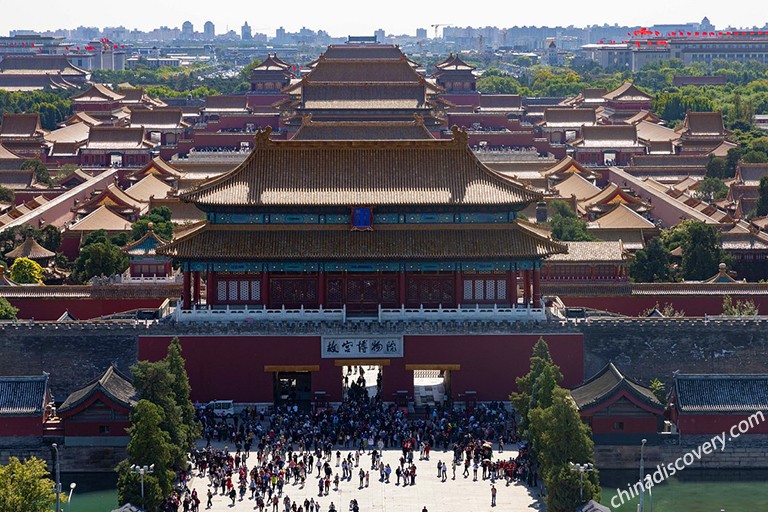
Panoramic View of the Forbidden City, Taken by Our Guest

View of the Jinshui River in the Forbidden City
The legend about the number of rooms in the Forbidden City is mainly because when Emperor Zhu Di built the Forbidden City, he originally planned to build 10,000 rooms, but was told in a dream that this number was the same as the number of Emperor lived in the heaven, thus being considered disrespectful to the gods. Therefore, he decided to reduce the number of rooms to 9999.5 as a sign of respect for the Emperor of Heaven. The ancient Chinese believed that 9 was the largest number, and the emperor was regarded as the "son of heaven" and the "honor of the nine-five", so 9999.5 was an auspicious number because it was in line with the identity and status of the emperor.
Recommended Beijing Tour including Forbidden City:
☛ 5 Days Beijing Family-friendly Tour with Universal Studios Fun
The royal buildings of the Ming and Qing dynasties generally used red walls and yellow tiles, which were the basic colors of the royal buildings. Yellow is a symbol of imperial power in Chinese culture, while red is often used to express festivity and solemnity. According to the Five Elements Theory in traditional Chinese culture, red and yellow correspond to fire and earth respectively, and fire and earth symbolize the stability and continuity of imperial power. Therefore, red and yellow became the dominant colors in Forbidden City and this choice of color is intended to show the supremacy of imperial power and royal dignity.
Recommended Beijing Tour including Forbidden City:
☛ 4 Days Classic Beijing Tour with Jinshanling Great Wall Hiking
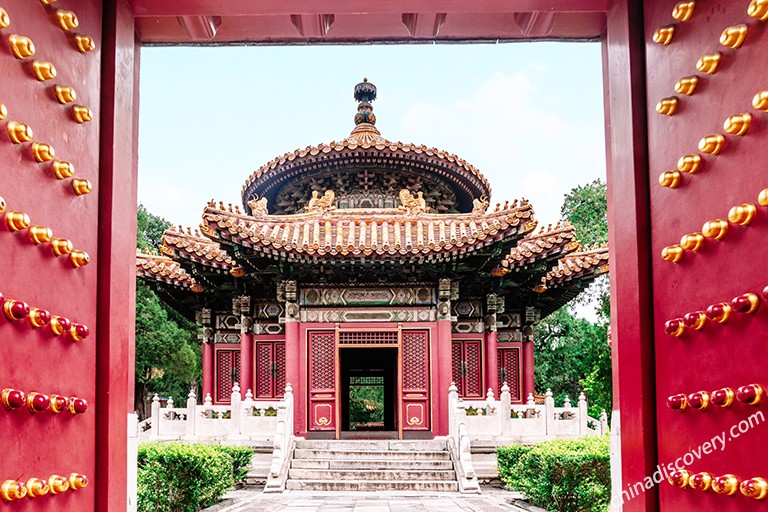
Beautiful Red and Yellow Architecture in the Forbidden City
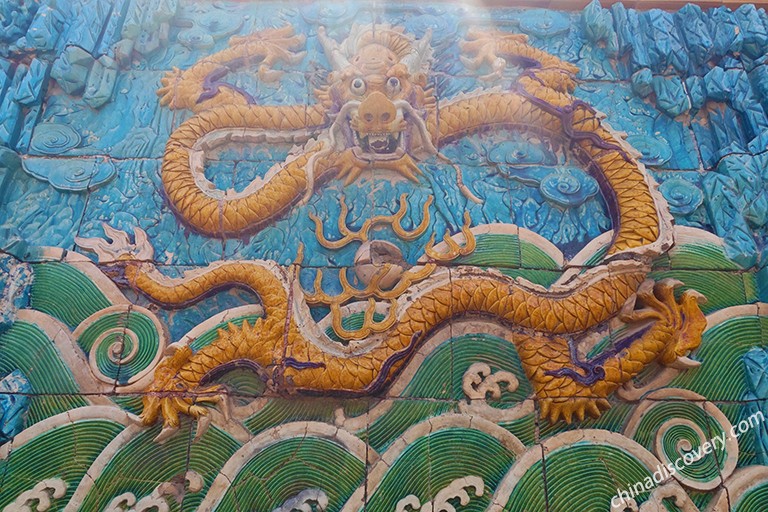
Chinese Loong in the Forbidden City
Loong is an important symbol in ancient Chinese culture, representing imperial power, dignity and auspiciousness. The Forbidden City, as the main residence of the emperor who regard himself as the embodiment of long, is filled with a lot of loong elements. The loong elements in the Forbidden City are widely distributed in the roof, doors and windows, beams and columns, steps, railings, tiles, etc. of the palace. There are 4,744 loong pattern decorations inside the Hall of Supreme Harmony, and also many loong decorations on the emperor's clothing and supplies. In addition, it is widely used in various utensils and artworks, such as lacquerware, woodware, enamelware, etc.
Recommended Beijing Tour including Forbidden City:
☛ 6 Days Classic Beijing Tour with In-depth Great Wall Experience
Today, the main function of the Forbidden City, the Palace Museum, is to serve as an open museum to showcase the lifestyle and artistic achievements of the ancient Chinese royal family to the public. At the same time, as a representative of ancient court culture, the Forbidden City attracts countless Chinese and foreign tourists every year. By visiting the Forbidden City, visitors can enjoy the rich collection of ancient art and relics, feel the royal architectural style, and learn about the history and culture of ancient China. Moreover, the Forbidden City is not only a symbol of Chinese history and culture, but also an important window for cultural exchanges between China and the world.
Recommended Beijing Tour including Forbidden City:
☛ 5 Days Beijing Essence Tour with Real Hutong Life Experience
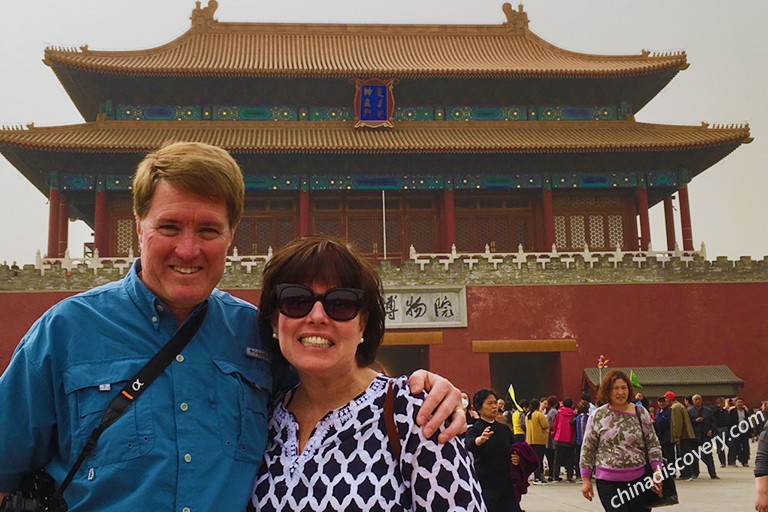
Our Guests Take Photo at Shenwu Gate, Palace Museum
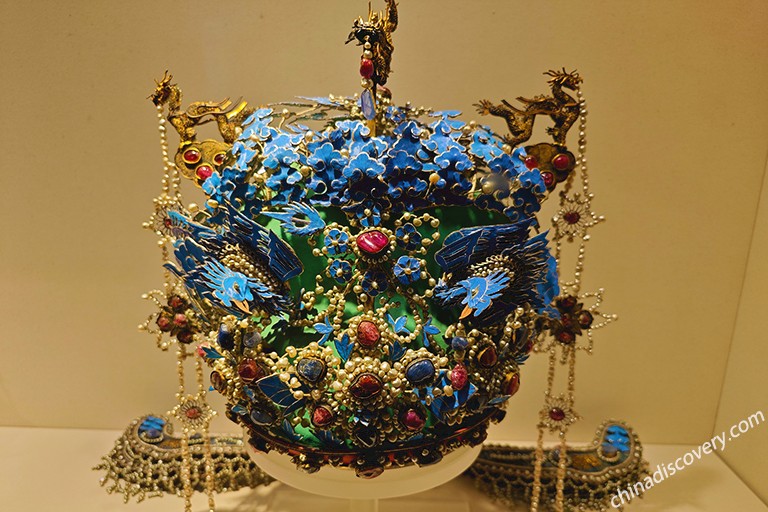
The Crown of the Ming Empress in the Palace Museum
The total number of collections in the Palace Museum is about 1.86 million pieces, covering 25 categories, including paintings, calligraphy, bronzes, gold and silverware, jade, ceramics, furniture and other categories, of which precious treasures account for 90% of the total collection, that is, there are more than 8,000 first-class collections. In the Palace Museum, not only can see the original state of the Ming and Qing dynasties palace buildings and historical sites, but also can admire permanent exhibitions of art collections such as treasures, clocks, calligraphy, paintings, ceramics, sculptures, etc., and there are also regularly temporary special exhibitions every year.
Recommended Beijing Tour including Forbidden City:

























